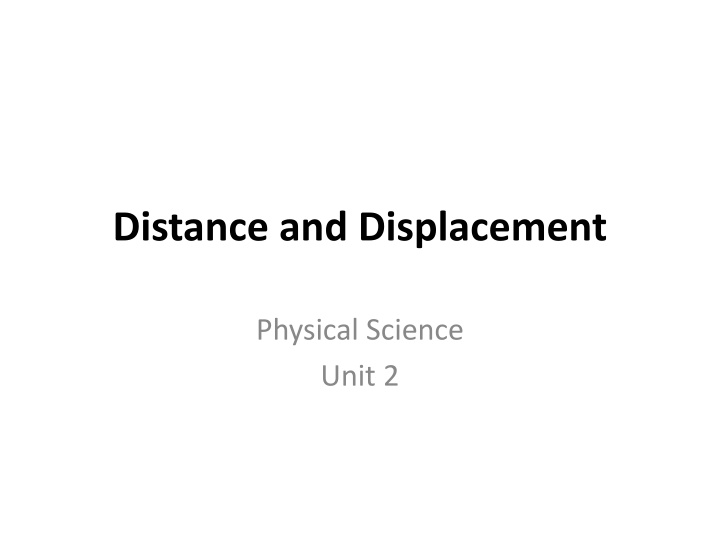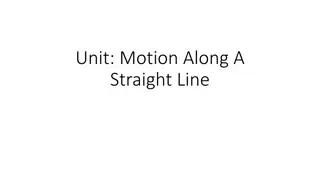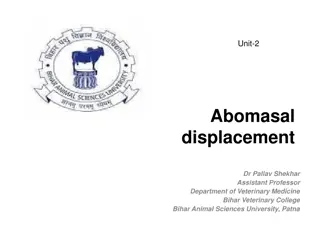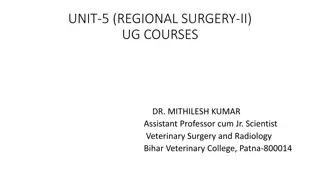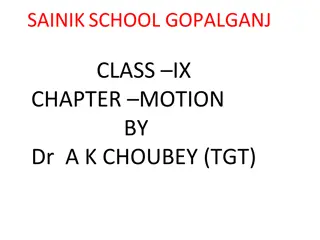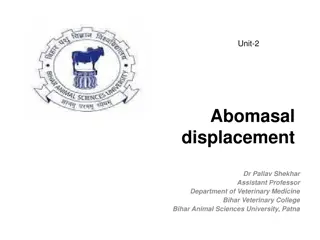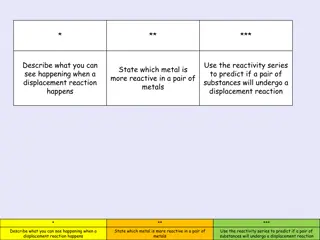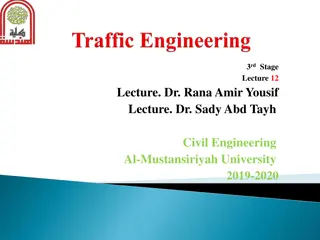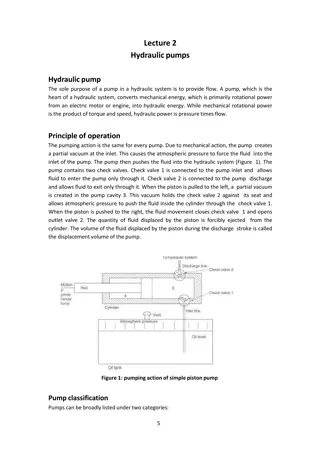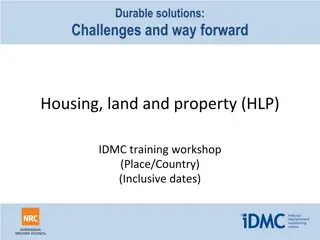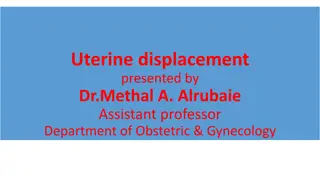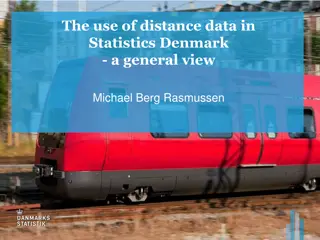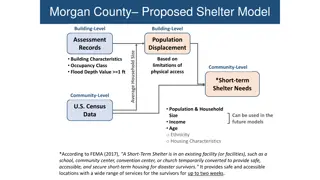Distance and Displacement in Physical Science
Exploring concepts of distance, displacement, frame of reference, and vector addition in relation to motion in physical science. Learn how to measure and understand motion using these fundamental principles.
Download Presentation

Please find below an Image/Link to download the presentation.
The content on the website is provided AS IS for your information and personal use only. It may not be sold, licensed, or shared on other websites without obtaining consent from the author.If you encounter any issues during the download, it is possible that the publisher has removed the file from their server.
You are allowed to download the files provided on this website for personal or commercial use, subject to the condition that they are used lawfully. All files are the property of their respective owners.
The content on the website is provided AS IS for your information and personal use only. It may not be sold, licensed, or shared on other websites without obtaining consent from the author.
E N D
Presentation Transcript
Distance and Displacement Physical Science Unit 2
Frame of Reference To describe motion accurately and completely, a frame of reference is necessary frame of reference is a system of objects that are not moving with respect to one another. Ex. A butterfly flying up and down in front of a person Relative motion is movement in relation to a frame of reference. Ex. A car driving by someone standing on the side of the road
Measuring Distance Distance is the length of a path between two points. (only numerical) Distance from Madison to Flowood (not a straight line) The SI unit for measure distance is meter (m) For larger measurements of distance the kilometer (km) is used.
Measuring Displacement To describe an object s position relative to a given point, you need to know how far away and in what direction the object is from that point. Displacement is the direction from the starting point and the length of a straight line from the starting point to ending point (straight line distance). Numerical value and a direction
Vectors Displacement is an example of a vector Vectors are quantities that have magnitude and direction. The magnitude can be size, length, or amount Vector addition is the combining of vector magnitudes and directions
Displacement Along a Straight Line When two displacements represented by two vectors, have the same direction, you can add their magnitudes.
Continued.. When two displacements are in opposite directions, the magnitudes subtract from each other
Questions 1. What is a frame of reference? How is it used to measure motion? 2. How are distance and displacement similar and different? 3. How are displacements combined? 4. A girl who is watching a plane fly tells her friend that the plane isn t moving at all. Describe a frame of reference in which the girl s description would be true. 5. Is displacement more like the length of a rope that is pulled tight or the length of a coiled rope? Explain
Questions 6. Would you measure the height of a building in meters? Explain your reasoning. 7. Should your directions to a friend for traveling from one city to another include displacements or distances? Explain 8. The resultant vector of two particular displacement vectors does not equal the sum of the magnitudes of the individual vectors. Describe the directions of the two vectors
